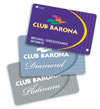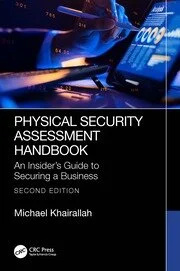‘Cheap Date’ ID Card Systems a Solid Business Investment


Compared with intrusion detection, security management systems and security video, ID card and badge systems are a reasonably “cheap date” that can payoff quickly and effectively.
A survey of sources by Security Magazine discovered that with turnkey systems, card printer price tags continue to drop, sometimes – depending on features and optional models – starting at under $1,000. You can get 500 blank cards for about half a C note, while blank proximity cards can cost from under $2 to $4. Blank cards and badges can come preprinted with a company logo or other information. Accessories such as lanyards and badge holders typically run 50-60 cents for plain lanyards and $25 per 100 routine holders. The price of a digital camera specifically for capturing photos for the ID Cards can range widely from $100 to $2,000.
A system bundle – software, printer, digital camera, cards, supplies and warranty – rings the corporate cash register at $2,600 to $6,000. The chief security officer can even roll his shopping card up to ID card systems at some Sam’s Club and Costcos.
It's obvious that operator needs and after-purchase concerns. Often nonsecurity personnel handle ID card systems.
But security buyers rarely base ID system purchases on cost alone.
According to recent Security Magazine research, the top five purchasing triggers are ease-of-use, performance of the printer, durability of the card, image quality and, by the way, security features.

A FLAT BUSINESS
When printing on access cards, wavy and warped are enemies. Flatness is a virtue for access or identification cards when using dye sublimation printing. True flatness can be achieved in a number of ways. First, in the manufacture of the cards, and secondly, in their storage by the security department. Proper storage can prevent warping. The thickness of the card also influences flatness; and it also impacts price.
The rule of thumb: The best card material must be brand new, clean, flat and made for dye sublimation printing. So the experts advise that the security department check each card shipment for flatness. It can save expenses and redos later. If true flatness cannot is not there, it can be manufactured in through reverse transfer printing. With this method, the card information is printed on clear plastic film, which then is adhered to the card as a part of the ID card printer process. The name for the process derives from the fact that the ink is applied to the back of the film in reverse so it reads correctly when adhered and the printing is protected on the underside.
These printers can be up to three to four times as expensive as dye sublimation printers, but they also are faster. Another type of printing is thermal transfer, used for cards that only require a single color.
UPGRADE FOR NEW ENCODING
Upgrading of printers can be justified due to new encoding technology in which data can be put on a magnetic stripe, proximity or smartcard chip at the same time as the card is being printed.
Scanners also can be part of the ID card system. For contractors and visitors or when security must enroll personnel at remote locations, scanners can take information from business cards and driver’s licenses and enter them into a database and onto an identification card, sometimes from self-service kiosks into which they are built.
Another card/badge cost – maintenance – can be easily contained. Proper and timely maintenance is crucial to printers. Cleaning kits are available through the printer makers and third-party resellers. And just like ink cartridges for laser printers, it makes a difference to purchase high quality ribbons for ID card/badge printers. Some printer companies have machine readable labels on the ribbons; if the printer doesn’t read it, it won’t use that ribbon.
How PVC cards are originally manufactured is important to cost and the need to hold down maintenance. When they die-cut, sometimes security personnel will find a lot of particles, a lot of debris; and that may damage the printing head.
Applications for ID cards can create new printer and consumables needs. For example, when it comes to proximity cards, a lot of cardholders are walking around with blank prox cards. Some end-users suggest printing ID info on thin 10-mil cards and adhering them to proximity cards. When the employee leaves the access system, the ID can be peeled off the clamshell prox and the clamshell reused. These types of cards also can be used for one-time events.
SIDEBAR: Cards Getting Smarter About Thickness
Smartcard chips and antennas in proximity cards are not contributing as much as they have in the past to keeping cards from being flat. More enterprises are going to contactless smartcards. The ability to print on the card — to personalize it — is much better. Smartcards are just as flat.
There’s no difference printing on smartcards because most manufacturers have default settings in direct-to-card printers where the print head will not print color over a chip, so it doesn’t matter.
Reverse transfer printing is trickier. If it’s in the standard one of two standard locations, the chief security officer or assigned staffer can just click a box, and it will automatically avoid that area and not try to put an overlay on the chip.
Printing on cards with different types of technologies requires ways of compensating. All card types are not created equal. In general, some printer makers recommend slowing the printer down, because the end-user will get much better saturation of color.
SIDEBAR: A Diversity of Printer Sources
Most of the elements of an ID card/badge system are unique – card stock, card printers and specialized software. Often chief security officers can obtain these elements bundled into a turnkey system through the printer manufacturers. There also are wholesalers and third-party resellers.
Among the printer makers:
- Brady People ID at bradypeopleid.com
- Datacard Group at datacard.com
- Digital Identification Solutions at digital-identification.com
- Fargo Electronics at fargo.com
- Hi Touch Imaging Technologies at hitouchimaging.com
- Team Nisca at teamnisca.com
- Ultra Electronics Card Systems at magicard.com
- Zebra Card Printer Solutions at zebracard.com
Looking for a reprint of this article?
From high-res PDFs to custom plaques, order your copy today!





